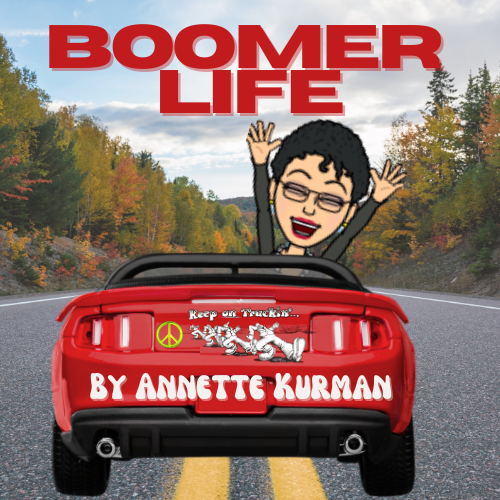 Where have all the magazines gone?
Where have all the magazines gone?
No where!
For some mistaken reason, because my current household only receives AARP The Magazine and Consumer Reports, I thought most other magazines were digital only. Not so!
I recently visited our local Barnes & Noble and was overwhelmed by the number and variety of print magazines for all interests. From men- and women-focused themes, to photography, knitting, sports of all kinds, health and wellness, soap operas, high fashion, DIY, and so much more.
I guess I was mistaken.
I remember growing up and eagerly looking forward to the week’s or month’s editions of Time, Newsweek, Life, and other magazines dropping through the mail slot. I’d scrutinize every glossy page (leaving said magazine a crumbled mess). Then there were those magazines my mom picked up at the supermarket, like Ladies Home Journal or Women’s Day. Oh, and the magazines that were actually addressed to me! Mad, (didn’t you love folding the back cover to see what astonishing scene was there waiting to be uncovered?) and American Girl, as well as the ones picked up at the store, like Seventeen and Tiger Beat.
And don’t forget magazines like Highlights for Children (still found in every pediatrician’s office), and other magazines from our grammar school days, like Jack and Jill, Ranger Rick, Humpty Dumpty, and Boys Life.
Yes, people still read hold-in-your-hand magazines, with the average U.S. adult reading 6.1 magazines monthly, according Zopdo.com. So, despite increasing digital options, magazines continue to appeal to their readers, remaining an important source of information, entertainment, and inspiration. (Think People Magazine) Jun 20, 2023
So what do printed magazines have over their online counterparts?
Print stimulates more senses (sounds sexy, no?) Print magazines can easily be browsed and you can feel the difference in paper from one magazine to another. You can easily toss it into a bag/briefcase and can read it virtually anywhere. People like engaging with print materials (do you bend a corner of a magazine to easily find that article again? I know, I know, you can do something similar with a digital magazine, but that’s too much trouble for me.)
“Print has proved to be more resilient than people thought,” said Mark Beare, director at Cape Town-based content marketing agency The Publishing Partnership.
However, there are some magazines that have ceased their printed versions and are only available digitally as eZines or eMagazines: EatingWell, Entertainment Weekly, Health, InStyle, Parents, and People en Español because of lower publishing and distribution costs and a potentially wider audience.
Digital versions of a magazine allow readers to interact with them in ways not possible with a print version, by making use of videos, audio, weblinks, and other interactive elements. Digital magazines can also be useful for travelers or commuters, as they take up little to no space. (Unless you’re like me. Darned if I can read a digital magazine on my smartphone. I need a full-size computer screen.)

Now some answers to your burning questions;
What is the No.1 most circulated magazine in the USA?
- The magazine with the highest circulation in 2022 was AARP The Magazine, featuring an impressive circulation of more than 22,750,000 and a reach of over 37,500,000 people! America’s most-read magazine is free to AARP Members.
- What magazines has the highest number of unique online visits?
In 2021, the People magazine website had 48.88 million unique mobile visitors, making it the most popular magazine to be accessed by mobile web in the United States, with 48.88 million unique mobile visitors. Its target audience is women between 18 and 32 because of article tops and advertisements.
- WebMD magazine was also up there, with an average monthly audience of over 35 million viewers accessing the website via mobile web.
- Reader’s Digest has a staggering monthly print audience of 19,438000 within the U.S.
So, what are the most popular magazines and publications? According to sources across the web they are:
Good Housekeeping, Sports Illustrated, National Geographic, PEOPLE, Literary Digest, Better Homes & Gardens, Cosmopolitan (I remember in high school Cosmopolitan was considered a bit “racy”), Us Weekly, Time Magazine, AARP, Economist, The New Yorker, Celebrity magazines, Real Simple, Rolling Stone, Food Network Magazine, Forbes, New York, Prevention, Southern Living, Time, WIRED.
There are many magazines we loved that are no more. Remember Sesame Street’s 3-2-1 Contact (1979-2001)? Disney Magazine (1965-2005), Atari Connection (1981-1984), Autoweek (1958-2019), Barney Magazine, (1994-2003), CD-ROM Today (1993-1996), Children’s Digest (1950-2009), Cosmogirl (1999-2009), Cracked (1958-2007). For a full listing of those magazines that are no longer around, check here.
Who reads magazines the most? While 91% of all adults read magazines, but those aged 35 and younger are more likely to read magazines (93-94%). In addition, 73% of adults agreed that reading a magazine or book in print format is more enjoyable than reading on a device.
How many Americans still read magazines? There are 222.2 million of us who do. As of 2021, the total number of adults that read magazines was 222.2 million across both print and digital. This has increased by 5.46% since 2012’s 210.7 million readers.
What generation reads the most? Millennials! Not only do Millennials (ages 26-40) read the most, they’re also the most likely to visit a library!
So, grab your library (or sign up for your library card), look up those magazines you used to love on the computer and jump in renew sometimes free subscriptions to your favorites!







